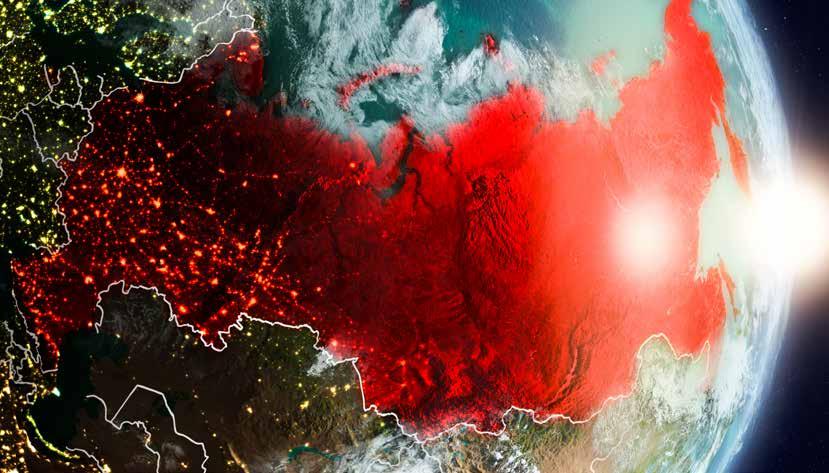46
SUSTAINABILITY & ENVIRONMENT
Russian Routes to Zero Carbon Rail
DAVID SHIRRES
T Russian freight train hauled by a three-unit class VL80 electric locomotive. These Soviet-era locomotives are being replaced by more modern traction.
he Russian International Transport and Logistics Forum PRO// MOTION.1520 is usually held in Sochi and attracts delegates for many countries. Not surprisingly, this year it was held online. Its “Green Swan Solutions” session considered environmental initiatives and took place at the same time as the RIA Routes to Zero Carbon Rail webinar. With the Russian forum recorded for later viewing, it was interesting to be able to compare these simultaneous events. Introducing this session, Russian Railways chief engineer Sergey Kobzev highlighted his company’s environmental credentials. Employing 700 environmental managers, Russian Railways has an environmental educational programme for school children and has policies that protect vulnerable ecological systems that include the requirement to plant seven trees for each one it cuts down.
World leading
13,120kW 4ES5K Ermak locomotive which was the world’s most powerful when introduced in 2014.
Sergey advised that the company saw electrification and measures to reduce energy savings as key to reducing emissions. Russian Railways has reduced its carbon emissions by 85 per cent since 2003 and, he claimed, is a world leader in having the lowest rail freight train emissions. In 2015, these were just nine grammes per tonne kilometre, compared with the UK figure of 33.
Rail Engineer | Issue 187 | November/December 2020
More than half of the 85,500km Russian rail network has now been electrified and electric trains carry 85 per cent of all rail passenger journeys. Of the 2,653 billion tonne kilometres (tk) of freight carried by Russian Railways, 87 per cent is hauled by electric traction. This volume is forecast to increase to 3,166 billion tk by 2025, with much of it forecast to increase on far eastern non-electrified routes. Hence the company has an electrification programme there to maintain its high level of electric freight haulage. It also has plans to spend almost two billion euros on 1,000 electric locomotives over the next three years and to increase its fleet of Lastochka EMUs from 183 to 270 by 2021. These investments are being financed by Green Bonds – Russian Railways is one of the first Russian companies to use this type of investment finance.










